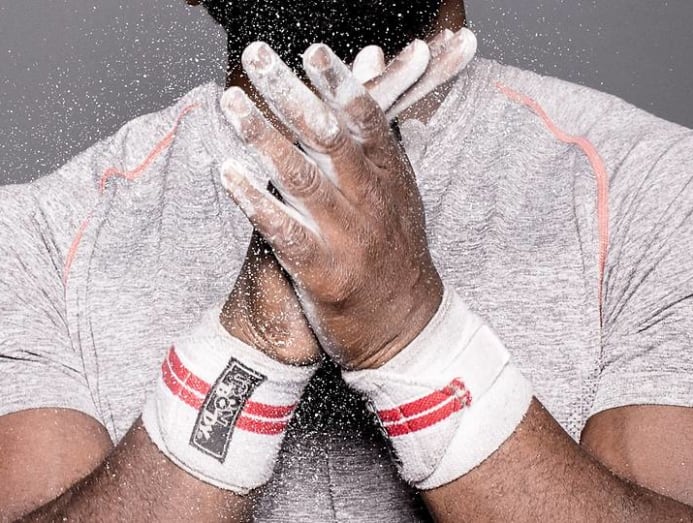Do workouts make your hands and feet feel rough? Here’s how to treat calluses
For some gym-goers and sporty types, calluses are like difficult-earned trophies for working out hard enough.
But there are likewise individuals who aren't cracking on having hands that feel similar sandpaper. And there are some who notice their choices of footwear condign limited because of the discomfort calluses create.
What exactly are calluses? They're basically "hard, dry, thick and typically yellowish" pare patches that mostly develop along ones' fingertips, base of operations of the fingers, balls of the feet and heels", said consultant dermatologist Dr Angeline Yong of Angeline Yong Dermatology.
Though largely painless, they may become increasingly uncomfortable as they grow in size and thickness, she added.
These form due to "repetitive action causing pressure and friction", said consultant dermatologist Dr Lee Shan Xian from Changi General Infirmary. Which is exactly what happens during regular physical activities, like working out.
PREVENTION AND Handling
Since calluses can thicken, it is important to wait into ways to counter them – especially if y'all have no intention of giving up the sport that created them in the offset place.
For climbers and Crossfitters, Dr Yong suggested padding the affected areas with over-the-counter moleskin.
Senior personal trainer Jacob Toh, 28, who has been lifting weights for eight years, said he strategises "the area of hand in contact with the bar while preparation, and applies moisturiser to the afflicted area daily".Weightlifter Maria Lau, on the other hand, uses lifting straps. "When I can grip well, there is less tendency to develop calluses," said the 39-year-quondam Singaporean, who has been training for fifteen years.
Dr Yong added that these straps "serve as a bridge betwixt wearing gloves and going barehanded". Since the straps wrap around the bar besides every bit the wrists, they not only let you lot elevator more than your natural grip allows but also protect the skin from friction, she said.
READ: Blisters and other party anxiety woes: How to forestall and treat them
Or try applying chalk to your hands, added Dr Lee. "Employ enough to form a protective layer on the easily. Withal, chalk tin can exist extremely drying, so information technology is of import to wash your hands with a moisturising soap."
Dr Yong added that regularly moisturising the skin with creams and lotions that contain salicylic acid, ammonium lactate and urea is also constructive in gradually softening hardened tissues.

To prevent existing foot calluses from worsening, comfy shoes that give toes plenty of jerk room are your best bet.
"You may also purchase supportive footwear with daze-absorbing soles, too as over-the-counter pads and insoles that reduce friction that cause calluses along the balls of the feet and heels.
Finally, patients should always wear socks with shoes and avoid walking barefoot," she said.
Whatever you practice, do not peel your calluses. "Picking at or peeling them off can event in tears or cracks in the skin, which increases the risk of infection," said Dr Lee.
If a callus is causing you lot discomfort, try soaking your feet in warm water for fifteen to 20 minutes once a week to soften the thickened peel. Then, apply a pumice stone or foot file to gently scrub the thick skin abroad.
"Be careful when using over-the-counter medicated corn pads/plasters or liquid corn removers that contain salicylic acid," she added. "Salicylic acrid can irritate salubrious skin and may lead to infection."
READ: Slippers and rubber clogs may feel comfy but they can be actually bad for your feet
Not that trimming down the thickened pare yourself is a good idea just if y'all accept diabetes, the results can exist worse, said Dr Yong.
"The College of Podiatry in the Britain advises against using sharp objects to cut away calluses equally injuries may occur.
In fact, this at-dwelling house procedure is peculiarly dangerous among diabetics due to poorer healing responses and impeded blood flow."
Instead, visit a dermatologist who can safely and painlessly remove the tissues with "prescription pare-softening solutions or scalpel-based procedures", said Dr Yong.
Source: https://cnalifestyle.channelnewsasia.com/wellness/calluses-thick-skin-weight-lifting-crossfit-234311
Belum ada Komentar untuk "Do workouts make your hands and feet feel rough? Here’s how to treat calluses"
Posting Komentar